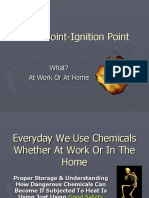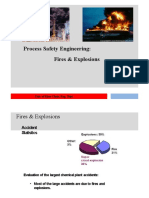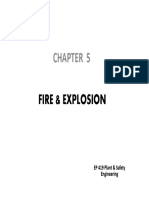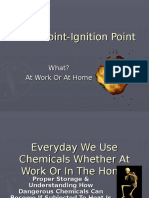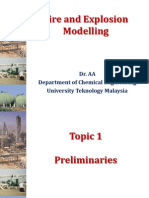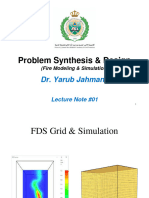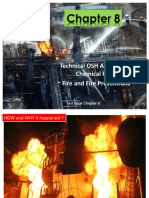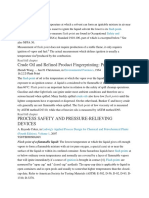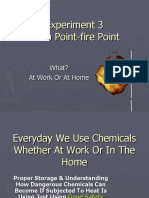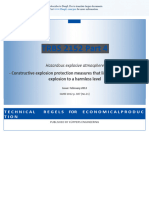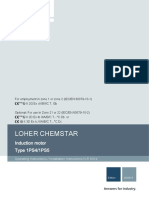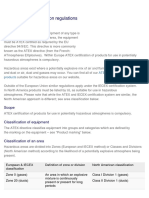0% found this document useful (0 votes)
70 views78 pagesChapter 2
The document discusses the fire triangle and its three components - fuel, oxygen, and ignition source. It then defines key terms related to fires and explosions such as combustion, explosion, detonation, deflagration, BLEVE, confined explosion, unconfined explosion, and dust explosions. The document goes on to discuss concepts such as flash point, flammability classifications, flammability limits, effects of temperature and pressure on flammability, minimum oxygen concentration, minimum ignition energy, and autoignition temperature.
Uploaded by
vishimalikshamli2004Copyright
© © All Rights Reserved
We take content rights seriously. If you suspect this is your content, claim it here.
Available Formats
Download as PDF, TXT or read online on Scribd
0% found this document useful (0 votes)
70 views78 pagesChapter 2
The document discusses the fire triangle and its three components - fuel, oxygen, and ignition source. It then defines key terms related to fires and explosions such as combustion, explosion, detonation, deflagration, BLEVE, confined explosion, unconfined explosion, and dust explosions. The document goes on to discuss concepts such as flash point, flammability classifications, flammability limits, effects of temperature and pressure on flammability, minimum oxygen concentration, minimum ignition energy, and autoignition temperature.
Uploaded by
vishimalikshamli2004Copyright
© © All Rights Reserved
We take content rights seriously. If you suspect this is your content, claim it here.
Available Formats
Download as PDF, TXT or read online on Scribd
/ 78





























